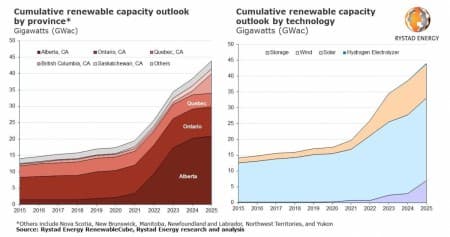Offshore Drilling Is Coming Back With A Bang
- It looks like the offshore oil and gas drilling market is in the early innings of an upcycle in investment and activity.
- Both Schlumberger and Transocean believe that the upcoming cycle will outpace the 2016-2019 cycle of investment and FID activity.
- Demand for offshore vessels and rigs is climbing, with most new rig contracts being fixed at day rates that are higher than their prior contracts.
After years of uncertainty and stagnation, the offshore drilling market is on the rebound and is in the early innings of an upcycle in investment and activity that will outpace the 2016-2019 cycle, major services and rig providers say. Analysts and top offshore drilling executives say that offshore rig utilization and day rates are also rising in a market that is expected to tighten going forward.
In one of the latest outlooks on global offshore drilling, contractor giant Transocean says that the market is recovering, with momentum accelerating.
"While the past eight years have been extremely challenging for the entire industry, it is clear that the recovery in offshore drilling is underway, as contracting activity, utilization rates for high-specification ultra-deepwater and harsh-environment assets, and dayrates all continue to rise," Transocean CEO Jeremy Thigpen said last week, commenting on the company's Q2 performance.
"And, with a backdrop of hydrocarbon supply challenges, we are increasingly encouraged that this momentum could continue for the foreseeable future,"
Thigpen added.
As the world continues to consume a lot of oil and gas and many governments are prioritizing energy security to an accelerated energy transition after the Russian invasion of Ukraine, the offshore drilling activity is set for an upturn.
"We believe the case is clear that E&P companies will continue to engage in exploration and development work to meet worldwide demand and replenish diminishing reserves. This is especially true in the offshore basins requiring our assets and services where recoverable reserve levels are high and carbon intensity is relatively low," Transocean's Thigpen said on the earnings call.
"With sustained constructive commodity prices, the economics of offshore projects remain compelling for continued development," the executive added.
The company sees a rapid tightening of the offshore market for high capability drilling assets in various regions with committed drillship utilization remaining above 90%, and further tightening is on the horizon, Thigpen said.
Related: China Oil Imports Pick Up After Slump
Last month, the world's largest oilfield services provider, Schlumberger, expressed a similarly optimistic view on offshore oil and gas drilling.
"The outlook for 2022, 2025 on offshore investments and FID activity will outpace visibly at 2016-2019 cycle. So we have early innings of this offshore cycle, but it's quite interesting," Schlumberger's CEO Olivier Le Peuch said on the earnings call in July.
"We see also offshore, the return of offshore being a characteristic that will only expand going forward. If you were to just look at the -- in terms of numbers, the number of jack-up big operating in shallow waters is actually on par higher than it has been for the previous cycles, more than 300, and deepwater is starting to catch up," Le Peuch added.
The market for offshore vessels and rigs sees utilization on the rise, followed by day rates, "finally allowing a market that has been in distress for many years to reap the benefits of the hard work that has been put down in the interim," Oddmund Føre, Senior Vice President, Energy Service Research, at Rystad Energy said in June.
"After a turbulent 2020-21 period denominated by the Covid-19 pandemic, the erosion of oil demand and a crash in oil prices, the offshore O&G sector is prime for a flurry of investment to make up for limited spending over the last few years," Mark Adeosun, Manager – Offshore Energy Services, at Westwood Global Energy Group, wrote in an insight on contractor spending offshore over the next few years.
According to Westwood, rig utilization is trending higher, and more currently inactive units are set to enter the offshore vessel fleet, says Teresa Wilkie, Research Director of Westwood's rig market intelligence service RigLogix.
"For the first time in several years, due to this increasing committed utilisation, most new rig contracts are being fixed at dayrates that are higher than their prior contracts – another indicator of a tightening rig market," Wilkie noted.
By Tsvetana Paraskova for Oilprice.com









